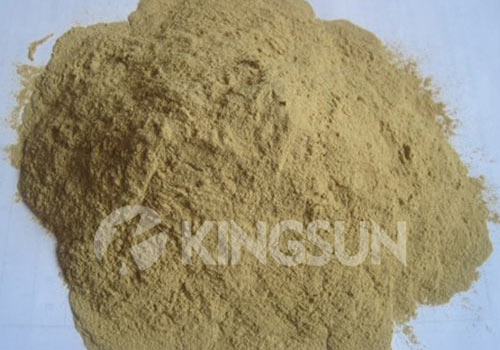As the first generation concrete admixture, calcium lignosulfonate is one of the lignin derivatives obtained in the pulp industry. Calcium lignosulphonate (referred to as wood calcium) is a multi-component polymer anionic surfactant. Its appearance is light yellow to dark brown powder with a slight aromatic odor. The molecular weight is generally between 800 and 10,000. Strong dispersibility, adhesion, and chelating properties. It is usually made from the cooking waste liquid of acid pulping (or called sulfite pulping) by spray drying. It is soluble in water but insoluble in any common organic solvents. The PH value of its 1% aqueous solution is about 4-6.
Industrial lignin has the characteristics of polymer and some special properties. It is mainly used in water treatment agents, concrete admixtures, dye dispersants, and various complexing agents, adhesives, etc., but the scope of application is still relatively limited. Although calcium lignosulfonate is a waste material produced in the papermaking process, it still has the basic structure of lignin-benzyl propane derivative, and its sulfonic acid group makes it soluble in water.
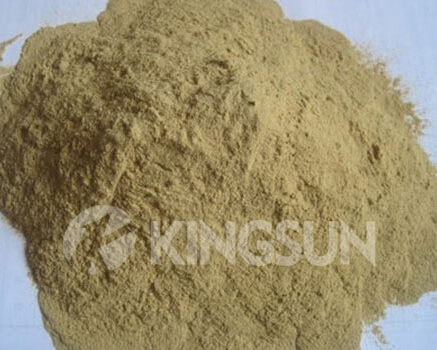 Calcium Lignin Sulfonate Powder
Calcium Lignin Sulfonate Powder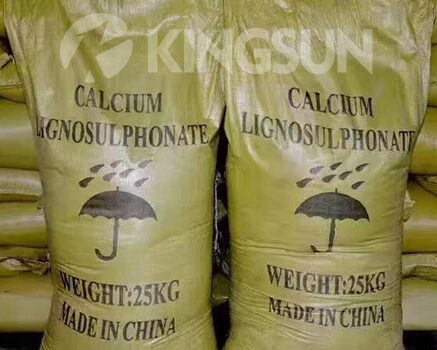 Calcium Lignin Sulfonate Manufacturer in China
Calcium Lignin Sulfonate Manufacturer in China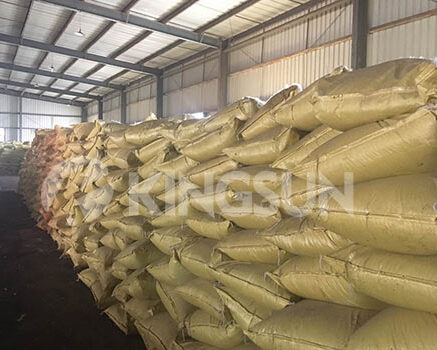 Calcium Lignosulfonate Supplier
Calcium Lignosulfonate Supplier Calcium Lignosulphonate Manufacturer
Calcium Lignosulphonate Manufacturer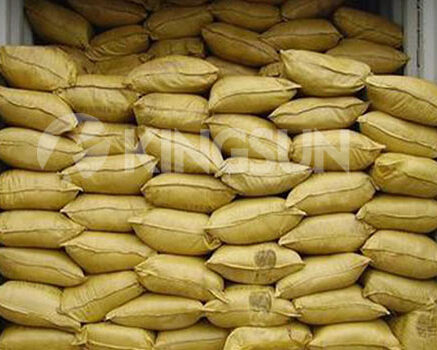 Calcium Lignosulphonate for Sale
Calcium Lignosulphonate for Sale
Kingsun calcium lignosulphonate has strong decomposability, cohesiveness, and affinity, and has been widely used as pesticide filler, emulsifying and dispersing agent, water suspension and suspoemulsion agent, concrete water reducing agent and auxiliary molding agent, printing and dyeing auxiliary, compound fertilizer, resin, leather tanning agent, mineral powder binder, ceramic auxiliary, refractory plasticizer, and bonding agent, casting, oil well or dam grouting gel, mineral processing dispersant, Feed additives, coal water slurry dispersants and additives, carbon black granulators, asphalt emulsified chemical pesticides and other chemical deep processing fields.
| Index items | Standard value | Test Results |
| Appearance | Brown powder | Meets the requirement |
| Moisture | ≤5.0% | 3.2 |
| PH value | 8–10 | 8.2 |
| Dry matter | ≥92% | 95 |
| lignosulphonate | ≥50% | 56 |
| Inorganic salts(Na2SO4 | ≤5.0% | 2.3 |
| Total reducing matter | ≤6.0% | 4.7 |
| Water insoluble matter | ≤4.0% | 3.67 |
| Calcium magnesium general quantity | ≤1.0% | 0.78 |
Application of Calcium Lignosulfonate
As a concrete water reducing agent, calcium lignin sulfonate can absorb and disperse cement, and improve the physical properties of concrete. It is especially suitable for large-volume concrete, high-fluidity concrete, pumped concrete, commercial concrete, summer concrete construction, as well as concrete with special requirements for slow setting, cast-in-place pile concrete, pile sinking concrete, artificially dug concrete, and underground large-volume concrete construction. It is generally used in conjunction with a high-efficiency water reducer.
Main features of calcium lignosulfonate in concrete
- The dosage is 0.20-0.30% of the cement dosage, and the usual dosage is 0.25%, which can reduce water consumption by 8-12%.
- Without changing the water consumption of concrete, it can increase the fluidity of concrete, improve workability, and improve the quality of the project.
- When the concrete slump is maintained and the strength is the same as that of the reference concrete, it can save 8-10% of cement.
- It has micro-air-entraining properties, which can improve the anti-permeability and freeze-thaw performance of concrete.
- The agent is non-corrosive to steel bars and aggregates after being mixed into concrete.
When making refractory bricks and tiles, calcium lignosulfonate is used as a dispersant and adhesive, which can significantly improve the operating performance, and has good effects such as water reduction, strengthening, and prevention of cracking.
Calcium lignosulfonate is used in ceramic products, which can reduce the carbon content and increase the green strength, reduce the amount of plastic clay, have good mud fluidity, increase the yield by 70-90%, and reduce the sintering speed from 70 minutes to 40 minutes.
Calcium lignosulfonate used in the smelting industry is mixed with mineral powder to form a mineral powder ball, which is dried and placed in the kiln, which can greatly increase the smelting recovery rate.
It can improve the preference of livestock and poultry, has good particle strength, reduces the amount of fine powder in the feed, reduces the powder return rate, and reduces the cost. The loss of the mold is reduced, the production capacity is increased by 10-20%, and the allowable amount of feed in the United States and Canada is 4.0%.
Calcium lignosulfonate can also be used in refining auxiliary, casting, pesticide wettable powder processing, briquette pressing, mining, beneficiation agent, road, soil, dust control, leather tanning filler, Carbon black granulation, and other aspects.
- Market Outlook
- Precautions for use
- Water-reducing mechanism
- Preparation Method
Globally, the calcium lignosulfonate market has been steadily growing in recent years. According to relevant market research data, the global calcium lignin sulfonate market is expected to expand at a compound annual growth rate (CAGR) from 2019 to 2024. This growth is primarily driven by its widespread application and growing demand in core application areas such as construction, chemicals, light industry, and environmental protection. In the construction industry, calcium lignosulphonate, as a concrete water reducer, significantly reduces concrete water consumption, improving its strength and durability. The global infrastructure construction boom, driven by accelerated urbanization in emerging markets and the construction of large-scale transportation hubs and bridges, has led to a surge in demand for concrete, driving an increase in the calcium lignin sulfonate market. The global market is expected to continue its growth trend over the next few years, with a CAGR expected to remain stable.
Focusing on the Chinese market, the calcium lignin sulfonate market is developing even more rapidly. By 2023, the Chinese Calcium lignosulphonate market was projected to exceed RMB 4.2 billion, an 8.7% year-on-year increase. Large-scale domestic infrastructure development, including the continued expansion of the high-speed rail network and the boom in urban rail transit construction, as well as the steady growth of industries such as chemicals and agriculture, has created a vast market for calcium lignosulfonate. The Chinese market is projected to surpass 5 billion yuan by 2025, with a compound annual growth rate expected to maintain between 6.5% and 7.2% by 2030.
1. Prioritize Cement Compatibility Testing
The water-reducing and dispersing effects of calcium lignosulfonate are significantly affected by the type of cement (e.g., Portland cement, Portland slag cement, or pozzolanic cement). The mineral composition (C3A and C3S content) of different cements directly influences its adsorption efficiency. Therefore, the optimal dosage must be determined through concrete trial mixes:
- The typical dosage range is 0.2%-0.8% of cement mass, but adjustments may be required for specific cements. Slag cement, due to the strong adsorption properties of slag powder, can increase the dosage to 0.5%-1.0%. High-alumina cement (high C3A content) can overreact with calcium lignosulphonate, potentially leading to accelerated slump loss. Therefore, a lower dosage (0.2%-0.4%) and the addition of a retarding component are recommended.
- During trial mixes, focus on observing the slump loss at 30 and 60 minutes. If the loss exceeds 30%, adjust the dosage or add other concrete admixtures (such as a small amount of sodium gluconate) to improve slump retention.
2. Confirm the purity and impurity content of the raw materials
Calcium lignin sulfonate is typically extracted from papermaking wastewater and may contain residual impurities such as sodium salts, iron salts, and sugars. These impurities require prior testing:
- Excessive sodium salt content (>5%) increases the risk of salt precipitation in the concrete, making it unsuitable for applications requiring high appearance, such as exterior walls and decorative concrete.
- Excessive iron salt content (>0.3%) may cause rust on the concrete surface and should be avoided for use in plain concrete or light-colored finishes.
- Residual sugars (such as hemicellulose decomposition products) can prolong the setting time of concrete and may cause excessive retarding in low-temperature environments (<10°C). Therefore, products produced through a desugaring process should be selected.
- Dispersion effect. This product has excellent dispersibility and can be quickly adsorbed on the surface of cement particles to form a lubricating film. This lubricating film reduces the friction resistance between cement particles, making it easier for cement particles to be evenly dispersed in concrete. The dispersion effect not only reduces the agglomeration of cement particles, but also helps to release bound cement particles, improving the fluidity and workability of concrete.
- Charge repulsion dispersion. With a negative charge, calcium lignosulfonate can neutralize the positive charge on the surface of cement particles and change the surface charge state of cement particles. This causes electrostatic repulsion between cement particles, which repel each other and disperse. The charge repulsion dispersion further enhances the uniformity and stability of concrete, and helps to improve the strength and durability of concrete.
- Free water release. Under the action of calcium lignin sulfonate, the dispersion of cement particles and charge repulsion dispersion allow some of the bound water to be released and become free water. These free waters participate in the hydration reaction of concrete and promote the hardening process of cement. At the same time, the release of free water also increases the fluidity of concrete, reduces the amount of water used for mixing concrete, and achieves a water-reducing effect.
- Improve microstructure. Through the dispersion effect and charge repulsion dispersion, calcium lignin sulfonate improves the microstructure of concrete. It makes cement particles more evenly distributed in concrete, reducing the generation of pores and microcracks. This improvement in microstructure helps to improve the density and strength of concrete, reduce the permeability and water absorption of concrete, and thus improve the durability and service life of concrete.
- Improve concrete performance. The water-reducing mechanism of calcium lignosulfonate not only improves the fluidity and workability of concrete, but also significantly improves the overall performance of concrete. The addition of water reducer reduces the water consumption of concrete and improves the strength and hardness of concrete. At the same time, due to the improvement of microstructure, the crack resistance, impermeability and wear resistance of concrete are also improved. In addition, calcium lignosulphonate is also environmentally friendly and meets the requirements of sustainable development.
Lignin is insoluble in neutral liquids and organic solvents. In order to produce lignin, there are two most commonly used methods to separate cellulose, hemicellulose, and lignin; and then from the (lignin-containing) pulp waste liquid to produce calcium lignosulfonate.
1. Sulfite pulp method
This is the treatment of wood chips with a well-known hot acidic calcium sulfite acid solution. During this digestion process, part of the lignin is sulfonated, and at the same time, the bond is hydrolyzed. Hydrolysis enables the lignosulfonate molecules to be dissolved in the slurry, and other soluble (such as sugar compounds) products are also obtained, the solubility of which is basically fixed.
2. Kraft pulp (ie sulfate) method
Another method is to treat the sawdust with a hot strong alkali solution, the pH is controlled in the range of 13~14, the lignin in the generated mother liquor is completely dissolved, and the hemicellulose is only partially dissolved. The dissolved product can be modified to obtain products with different properties and multiple specifications so that it has broad application prospects.
Why Choose Kingsun
As a leading concrete admixtures manufacturer and supplier in China, Kingsun has more than 15 years’ experience in construction industry. And Kingsun has its own factory, large warehouse and the advanced fully automated production lines.
- We can ensure sufficient supply and timely delivery.
- All of Kingsun products have passed many certifications, such as ISO, SGS,etc.
- We always high-quality products, competitive prices and good services for all the customers.
- We also have many successful export cases. Our products have been exported to more than 30 countries, including Brazil, Mexico, Colombia, Ukraine, Uzbekistan, Bahrain, Jordan, Nigeria, Saudi Arabia, United Arab Emirates, Malaysia, Singapore, Vietnam,Thailand, Indonesia, Philippines, Pakistan, Bangladesh, India, etc.

